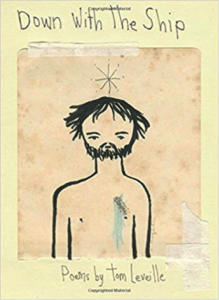Posted by Elana Evenden , GD Creative Non-Fiction Reader for 7.1
In several of my English classes this semester, professors have raised this question: Will people continue to read poetry that hasn’t been assigned for a class? This question has me thinking that maybe poetry is a changing art form and accessible to readers in new ways. We’ve all been there in those sad, angst-filled teenage years where ‘no one understood you.’ What other way to get your feelings out than some sappy, crappy poetry? So, let us be honest, poetry has all made its way into our lives as a way to rant our feelings, reading assignments, or through music, rap or slam poetry. Therefore, can poetry ever truly die or just evolve?
People may no longer want to read the classics for fun, but poetry is available and expressed on a whole new medium in 2018. This being said, it may be sad for many seeing that poetry is not promoted the way it used to be. When one steps into Barnes and Noble, only the popular best sellers are up front. Poetry is normally pushed to a back corner in an unorganized way making stumbling across a good book of poetry almost impossible. Personally, I believe this goes hand in hand with the idea of big businesses. Independent bookstores are dying out, while larger scale bookstores are focused on making a name for the company more so than the literature available. Barnes and Noble is not what it used to be in this digital age. Perhaps the concept of holding a book has changed to people as kindles and iPhones are much more readily available than carrying around a book.
Poetry has become even more accessible on almost all forms of social media. The art of slam poetry has become popular as people put videos of their \spoken word poems on youtube, making it more available for people on social media with a share or retweet button. Poets have also started their careers on social media. For instance, Tom Leveille, started his career on twitter, tweeting poetic lines or tweet threads that were shared rapidly with a retweet or comment. His twitter @avxlanche began to gain followers as he started sharing his slam poetry videos, his tumblr and his blog (hellopoetry.com/TomLeveille.) As he became more well known on the internet, he was able to publish the poetry book, Down With the Ship. The poems in his book are a beautiful representation of raw emotion, that often forces the reader to reflect within themselves. Much of the poetry in his book is also what he preforms aloud at spoken word events. This creates an interesting dynamic for readers to be able to hear it out loud as well as see it written on the page.
Readers are also following poetry pages on Facebook and Instagram, which allows for new and aspiring poets to share their work and possibly get noticed. A whole new medium for poetry is available online and through song or rap. Native American climate and social justice activist, Xiuhtezcatl Martinez, recently came to Geneseo to give a talk about climate change and its impact on Native people. This speaker was especially compelling because he used rap and the spoken word to get across many of his ideas about the issues of climate change and being a Native American in our society today. His delivery of the spoken word resonated with many people, specifically young people who were thrilled to have this information delivered to them through rap.
Poetry isn’t dying. What we were used to in terms of the poetry may be dying out, but not the creativity and love for the art of it. It may no longer be the Robert Frost book on a cold day in a coffee shop, but rather spoken word, a shared tweet, a video of a performance or an Instagram caption. This changing concept of poetry may not be a bad thing, but more of an adjustment with the changing times. Poetry is alive and well and being delivered through different mediums.

